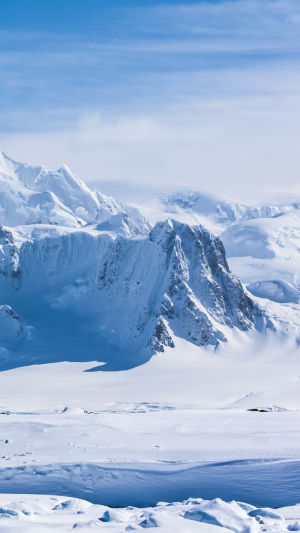A glacier is a natural mass of ice that forms in polar or alpine regions over many years and moves along the ground.
Glaciers accumulate snow over extended periods and undergo processes such as compaction, recrystallization, and refreezing, which contribute to the formation of glacial landforms.
Possessing a distinct form, level, and plasticity, glaciers experience plastic flow and block sliding under the influence of gravity and pressure. They represent a crucial source of freshwater on the Earth's surface.
Glacial landforms, molded by glacial action, fall within the category of climatic landforms. Approximately eleven percent of the Earth's land surface is covered by modern glaciers, primarily found in polar regions, high mountains, and plateaus in middle and low latitudes.
Glaciers can be categorized based on their morphology into continental glaciers and mountain glaciers. Continental glaciers, also known as "ice slopes" or "ice sheets," are massive ice bodies covering entire islands or continents. Mountain glaciers, or "alpine glaciers," develop in mountainous regions, influenced significantly by the terrain.
Glacier Action:
1. Glacier Erosion:
Glacier erosion occurs through pull erosion and abrasion. Pull erosion involves the glacier pulling up rock from the bottom, frozen together due to repeated freezing and thawing. Abrasion happens as the glacier's movement grinds and etches the bottom bedrock by sliding debris.
2. Glacial Transportation:
Glacial transportation results in loose debris falling from mountain slopes into the glacier. The glacier transports these rocks downstream, forming moraine.
3. Glacier Accumulation:
After glacier ablation, various forms of handled materials accumulate to form glacier deposits. These deposits are poorly sorted, featuring mixed sizes and low gravel grinding roundness.
The European continent is extensively covered with glacial landforms, showcasing the remnants of glacial action. The western coastline of Scandinavia exhibits jagged features, twisted coastlines, and numerous deep inland bays.
These bays, forming a strip-shaped distribution, create a coastline known as the "fjord landscape." The creation of these fjords can be attributed to glaciers originating in the Scandinavian mountains, sliding under gravity, causing erosion, and leaving behind deep bays as the glaciers melted.
Finland, one of the three Nordic countries, is renowned as the "Land of a Thousand Lakes," though it actually boasts more than tens of thousands. The abundance of lakes in Finland results from glacier erosion during the Quaternary Ice Age. As thick glaciers covered Finland's high latitudes, the enormous weight and slow movement created uneven ground surfaces. As the glaciers melted, potholes formed, collecting surface water and giving rise to numerous lakes.
In southern Europe, the Alps showcase a "mountain glacier landscape." The Alps, a steep mountain range with an average elevation of about 3,000 meters, feature numerous glaciers due to their high altitude. Glacial action has shaped distinctive landforms in the Alps.





